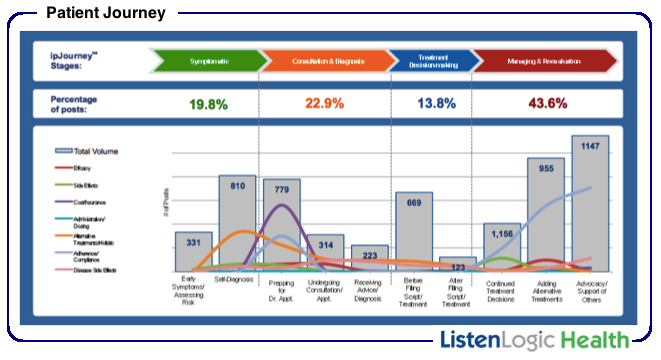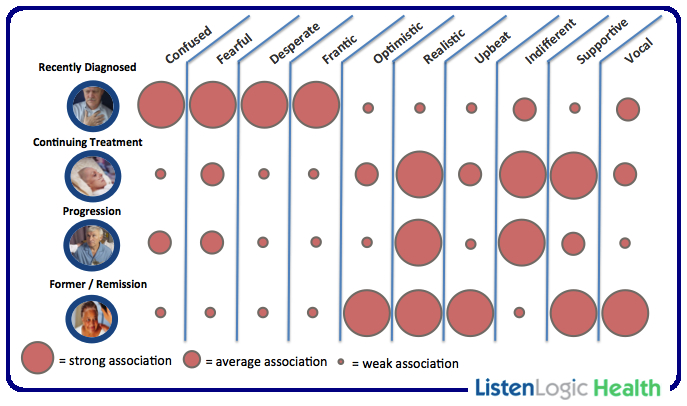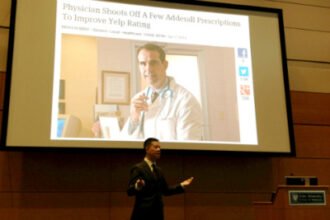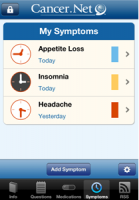 Today’s digital social age presents an incredible opportunity for the pharmaceutical and healthcare industries. For years, the struggle to understand evolving patient needs in order to strategically align and address them has been at the forefront of the value proposition for healthcare. However, gaining deep, trustworthy insight into the journeys patients traverse has been a daunting challenge.
Today’s digital social age presents an incredible opportunity for the pharmaceutical and healthcare industries. For years, the struggle to understand evolving patient needs in order to strategically align and address them has been at the forefront of the value proposition for healthcare. However, gaining deep, trustworthy insight into the journeys patients traverse has been a daunting challenge.
 Today’s digital social age presents an incredible opportunity for the pharmaceutical and healthcare industries. For years, the struggle to understand evolving patient needs in order to strategically align and address them has been at the forefront of the value proposition for healthcare. However, gaining deep, trustworthy insight into the journeys patients traverse has been a daunting challenge.
Today’s digital social age presents an incredible opportunity for the pharmaceutical and healthcare industries. For years, the struggle to understand evolving patient needs in order to strategically align and address them has been at the forefront of the value proposition for healthcare. However, gaining deep, trustworthy insight into the journeys patients traverse has been a daunting challenge.
Today the dynamics have completely shifted in the “open social age.” With millions of patients broadcasting their experiences, reactions, behaviors, decisions and attitudes on their conditions, treatments and providers, there is an incredible wealth of “big data” available. With this, however, the daunting challenge has shifted from a lack of detailed insight to a tsunami of real-time information.
As society approaches a complete digital state, technological advances have transformed the way people work, learn, communicate and share. And consumers freely share their opinions and experiences on social networks, blogs, micro-blogs, message boards, forums, mainstream news sites and a variety of other online platforms. They do this on practically every topic spanning their lives, including their health.
According to Manhattan Research, nearly 200 million American adults research prescription medications online with a majority looking to open social sources for information and opinions.
On-Line All the Time
Many feel that the online and offline worlds are fragmenting the ability for pharmaceutical companies to effectively and consistently reach patients, however the proliferation of mobile technology is actually aligning these worlds closer than ever before. No longer are patients tethered to a desktop computer; they are now consistently connected to a myriad of tools, information sources and social networks, empowering them to take a proactive position in their own healthcare decisions.
According to a study conducted by Morgan Stanley, 91 percent of mobile users keep their device within three feet of them 24-hours per day. These mobile devices are now widely a standardization of life; people watch TV with them, shop with them and yes, make their medical decisions with them in-hand.
This ‘always on’ state that mobile online accessibility facilitates is enhancing the way healthcare decisions and activities are undertaken, from understanding symptoms and diagnoses to learning about treatment options and side effects. This, along with the all-time accessibility of mobile devices has made the wealth of information ubiquitous in the ‘offline’ world.
An Ever-Changing Journey
The empowerment patients have with this information access presents a challenge for pharmaceutical and health brand managers to keep pace with the ever-changing journey the patient (and caregiver) takes. The massive flow of information from a myriad of sources, including those across the open social universe, creates a wide array of paths patients can take towards their treatments. This wealth of information also increases the velocity of health decisions, including compliance, often compressing the time between demand moments and decision points, making it even more challenging for the treatment provider to identify and influence the decision with messaging or education.
The key to driving success with care is for these treatment providers to deeply understand patients, caregivers and healthcare providers by continually mapping each party’s journey as it shifts with their experiences and attitudes. Leveraging this insight to drive messaging, education and innovation to align with the patients’ needs (met and unmet) is critical in enhancing their overall care.
Mapping the Journey
The basis of understanding the patient journey today is mapping it with advanced social intelligence. To adequately accomplish this, it must be derived from the ‘big data’ mining of millions of daily patient social conversations. This is simple in concept, but challenging in technical execution. This is why so many leading brands are turning to advanced, streaming ‘big data’ solutions to deliver deep insights on a rapid basis of patients as well as their caregivers and healthcare providers.
In the following example the patient journey is mapped for a specific treatment option for low testosterone. The journey spans stages from symptoms and diagnosis through treatment and management of the condition. This map also reviews the patient journey based on a multidimensional view of factors ranging from lifestyle impact and cost to efficacy and compliance.

This provides a valuable view of the demand moments, decision points and influencing factors for the patient. This allows the brand team to understand when and how to engage and influence the patient’s path in order to enhance aspects like compliance and ultimately efficacy of the treatment.
This second example illustrates the level of detail that can be constructed within the patient journey. Here, the volume of patients feeling a specific emotions across a wide spectrum is illustrated at each stage of the journey. This delivers powerful insight into the patient’s state of mind to drive strategic aspects of the treatment from education to messaging. This in turn can influence compliance and overall efficacy of the treatment.

An Intelligence Impact
Today, with advanced social intelligence, accurately mapping patient journeys has never been easier, more accurate or powerful. Leading pharmaceutical providers are adopting this methodology to drive their product innovation, packaging, messaging, promotions, positioning, placement and ultimately their bottom line by delivering what patients want and need based on their own requests, interests, activities and attitudes.
As compliance and efficacy continue to be a focus to improve patient care, having the ability to view, understand and influence the patient journey becomes increasingly critical for health and pharmaceutical companies. Extracting unprecedented insights within millions of daily social conversations from patients, caregivers and healthcare professionals now facilitates this, allowing pharmaceutical providers to align their treatments, education, messaging and innovation with the needs of the patients like never before.
(Editor’s note: Robert Gardner is a Director at ListenLogicHealth)
(online pharmacy / shutterstock)










